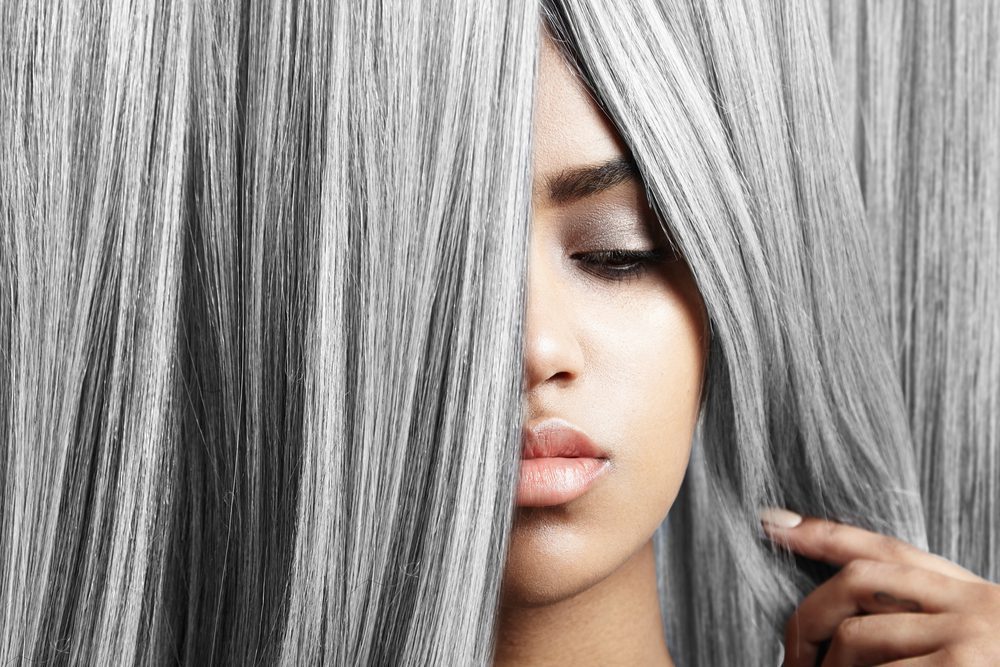Graying hair is a natural part of aging, but few fully understand the complex biological processes at play. The transformation from pigmented to gray hair is a gradual change driven by shifts in cellular functions. As people age, the specialized cells responsible for producing melanin, called melanocytes, start to slow down their pigment production. This leads to the characteristic silvery-gray color. While this transition is inevitable for most people, understanding the science behind it provides crucial insight into why hair loses its color over time.
Cellular mechanisms of graying
The graying process begins deep within the hair follicles, where melanocytes are housed. These cells are tasked with producing melanin, the pigment that gives hair its color. Over time, melanocytes become less efficient at producing melanin. As their activity decreases, hair grows in without the typical pigment, resulting in the gradual shift to gray hair.
This change doesn’t happen overnight. It’s a slow process that spans many years, depending on various internal and external factors. When melanocytes stop producing melanin altogether, the hair turns fully gray or white. The rate and extent of this process can differ significantly from person to person, which is why some people may notice gray hair earlier than others.
Key factors influencing gray hair
Several factors contribute to the graying process, with genetics playing the most significant role. However, other elements also influence how and when your hair will turn gray. The key factors include:
- Genetics and family history: Genetics largely determine when your hair will start to gray. If your parents or grandparents experienced early graying, there’s a higher chance you will too. Family history can provide insights into your graying patterns, including the age at which it might begin.
- Natural aging: As part of the natural aging process, hair gradually loses its color due to a reduction in melanin production. This is influenced by age and biological processes, and it’s an inevitable milestone for most people.
- Oxidative stress: Oxidative stress occurs when there is an imbalance between free radicals and antioxidants in the body. This damage can affect melanocytes and accelerate the graying process. Lifestyle factors like poor diet and exposure to environmental toxins can increase oxidative stress levels.
- Environmental and lifestyle impacts: A range of external factors can influence the graying process. For example, high levels of stress, exposure to UV rays, and pollution may exacerbate the loss of pigment in hair. A lack of proper nutrients and poor hair care routines can also contribute to premature graying.
- Medical considerations: Some health conditions can speed up or influence the graying process. Conditions like Vitiligo, a disorder where skin cells lose pigment, can cause hair to lose its color as well. Certain medical treatments, such as chemotherapy, can also have an impact on hair pigmentation, leading to premature graying or hair loss.
- Hormonal changes: As people age, hormonal shifts can affect various aspects of their health, including hair color. These changes can cause melanocytes to slow their pigment production, contributing to the appearance of gray hair.
Embracing natural transitions
Gray hair is an unavoidable part of aging, but it carries deep cultural and social significance. In many cultures, gray hair is seen as a symbol of wisdom and maturity. Modern beauty standards are shifting, with many embracing their gray hair as a natural sign of aging. In fact, more and more people are opting to let their gray hair grow out instead of dyeing it.
For those who wish to manage gray hair, a range of treatment options is available. Hair dyeing is the most common solution, with numerous products that cater to all shades of gray. However, there’s also a growing movement that encourages people to embrace their natural transition to gray. Some individuals even choose to enhance their silver strands with special hair treatments designed to bring out the beauty of gray hair.
The future of gray hair research
The study of graying hair continues to evolve, with research into its biological mechanisms revealing new insights into why and how this process occurs. While graying is a natural part of aging, more advanced research could potentially lead to ways to slow the process down or even reverse it. Scientists are particularly focused on understanding the impact of genetics, oxidative stress, and other factors in greater detail.
With the growing focus on cosmetic treatments and societal shifts toward natural beauty, gray hair has become a point of exploration in both scientific and social realms. As researchers gain a deeper understanding of the graying process, we may see innovations in both management strategies and treatments.
Final thoughts
Graying hair is a natural part of aging that occurs due to a gradual reduction in melanin production. While genetics is the biggest factor influencing when and how your hair will turn gray, environmental, lifestyle, and medical factors also play significant roles. Embracing this natural transformation can offer a deeper understanding of the biological processes behind it and help you decide how you wish to manage it. Whether you choose to embrace the silver strands or seek treatment, understanding what causes gray hair is essential in making informed choices about your hair care routine.















